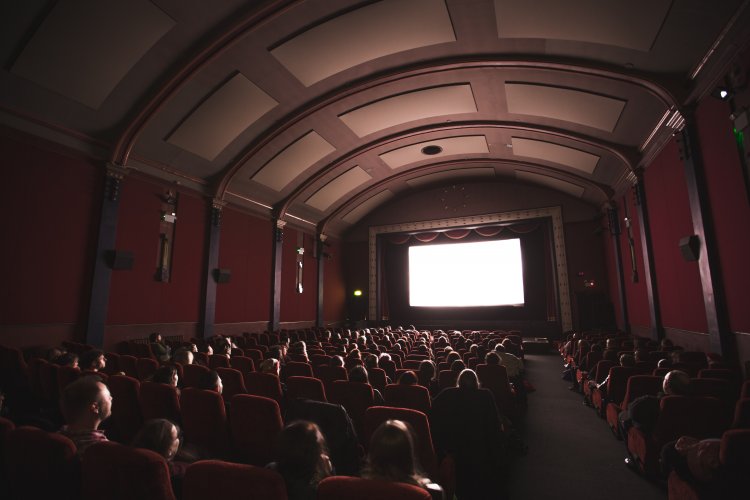Cozy armchairs, a widescreen, and a staircase with lighting are visible attributes of a modern cinema hall. And how was it before? What was hiding behind the wall with the window? Grab some popcorn and read about it in our article.
The birth of cinema is associated with the names of two French inventors – the Lumière brothers. Their first professional movie camera was called Cinématographe (1895).
The universal device included a movie camera, a copier for printing film positive, and a movie projector. The Cinématographe came to Russia later – only by 1910, its production was established. But they were produced individually and completely copied the Lumière original.
The first Russian movie camera was created in 1918 by engineer Alexander Pavsky. It was a silent projector Rus. Its prototype was the French Pathé No.2. The Russian movie camera began to be mastered at the Petrograd plant, which then became part of the now-famous LOMO. At first, there were not enough materials for the manufacture of parts, so the developers were looking for them on their own. The first batch was ready for the anniversary of the revolution and consisted of thousands of projectors ordered by the Moscow Committee on Cinematography and the People’s Commissariat of Education. The devices were immediately adapted to work in mobile units by putting them on wooden bases.
The cinema equipment of that era consisted of a manual drive, an unreliable light barrier, and a combustible film. But fans of the new art could already watch Battleship Potemkin, Aelita, or amateur tapes.
Cinema has become a new kind of art. The sessions attracted more and more viewers. Moving pictures could not leave viewers indifferent in the first half of the 20th century, so the devices were actively improved.
In the 1920s, a new mobile model appeared – GOZ. For ease of movement, the device could fit into a suitcase and had a simplified and lightweight design. Its creators Alexander Pavsky and Alexander Shelashev placed a small dynamo inside the device, which, together with a tape-pulling mechanism, was manually turned by a projectionist. The dynamo powered the projection lamp bulb.
The requirements for cinema equipment continued to grow along with the industry development. It was necessary to expand horizons. And it’s not just about screens.
The next device was TOMP-4. The device had a powerful mirror arc lamp, an improved lubrication system, and simplified charging. Then the projector was supplemented with sound consoles, so TOMP-4 found its application in the cinema network of the pre-war and wartime.
The last pre-war model was KZS-22. Its sound and projection parts were combined, and all the moving elements of the mechanism were hidden from the viewer’s eyes. The designers also increased the reflective mirror and increased the power of the flashlight and the light intensity of the optics. Thanks to this, the projection quality became much higher, and working with the device – more convenient and safer.
In the 1930s, cinema equipment factories appeared in Leningrad, Odesa, Kyiv, Moscow, Samarkand. All kinds of cinema equipment were produced on them — filming, sound recording, photocopying, developing, film projection, sound reproducing, etc.
Such a production breakthrough in mass production of equipment helped provide 43 film studios with domestic equipment.
The Second World War made its adjustments to the further fate of movie technology, so the development continued only after its end.
The expansion of the screen frames occurred in the mid-1950s. Following this, panoramic and large-format cinema systems became widespread. At the same time, another change occurred. Television became a mass medium for the dissemination of information and the main competitor of cinema. To bring the viewer back to the cinemas, in addition to the large-format innovation, the image and sound quality were improved, and new types of film were developed by Kodak.
And new movie cameras with high-power lenses allowed operators to shoot in lower light conditions. All this brought the development of domestic cinema equipment to a new level. The Central Design Bureau of Cinema Equipment was established in Leningrad and reached the world level in sound equipment, microphones, cinema optics, and developing machines.
In the late 1970s, cinema equipment reached a new level. It combined the qualities of portable cameras suitable for shooting from motion and the noiselessness of studio equipment. All this helped the directors to go beyond the pavilions into natural conditions, preserving the simultaneous recording of a fine synchronous phonogram.
Cinema lovers could enjoy a leisurely display of “beauties” — nature, interiors, or costumes, the thoroughness in the transfer of textures on location and in the interior, the emphasized natural lighting. In such conditions, there was a feeling of air permeated by the sun’s rays. So, the new possibilities of movie equipment gave the audience movies with new effects, and the movies created at that time went down in the history of cinema.
Photo on the homepage and on the page: Jake Hills / Photo bank Unsplash






















